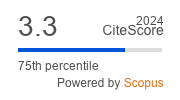Article | Open Access
Poverty Suburbanization: Theoretical Insights and Empirical Analyses
| Views: | 5962 | | | Downloads: | 3318 |
Abstract: Today almost every major metropolitan area in the U.S. has experienced rising poverty at a rate that surpasses its urban core (Kneebone & Berube, 2013, p. 2). Poverty suburbanization has accelerated about 3.3 percentage points over the last decade. In this article, factors associated with the growing share of poor in suburbs in the 100 largest metropolitan areas were examined. The analysis sought to address the overarching question: what metropolitan factors are associated with poverty suburbanization? Poverty suburbanization growth rates and temporal changes in metropolitan level factors for 2000 and 2008 are highlighted. Change regression results reveal important macro level and within suburb effects illuminating recent changes in the spatial distribution of the poor. Positive changes in housing affordability appear to open up access to suburban neighborhoods, while metropolitan job decentralization and residential segregation have countervailing effects on the suburbanization of the poor. Findings from this paper suggest that it is appropriate to place the suburbanization of poverty in the contemporary period within an urban political economy framework of urban growth and change.
Keywords: affordable housing; job sprawl; residential segregation; suburban poor
Published:
© The author(s). This is an open access article distributed under the terms of the Creative Commons Attribution 4.0 license (http://creativecommons.org/licenses/by/4.0), which permits any use, distribution, and reproduction of the work without further permission provided the original author(s) and source are credited.


